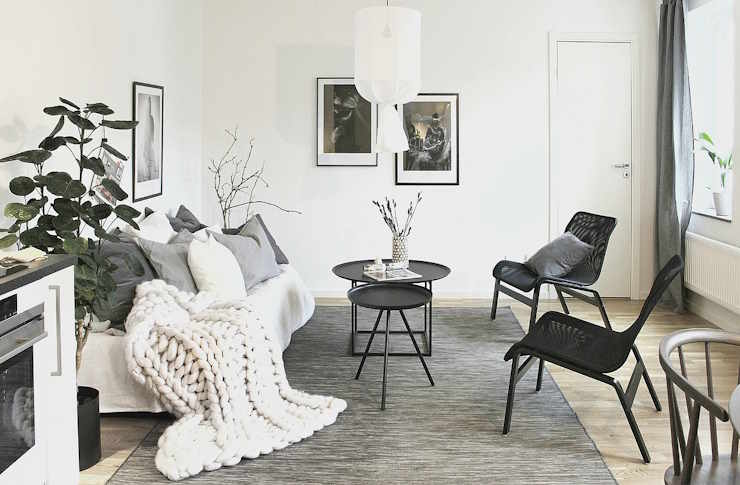Embracing the Grandmillennial Aesthetic: A Fresh Take on Traditional Design
The fusion of classic elegance with contemporary flair has given rise to a captivating design movement known as Grandmillennial style. This charming aesthetic marries the warmth of traditional decor with modern sensibilities, creating spaces that are both nostalgic and refreshingly current. As young homeowners seek to infuse their living spaces with personality and character, the Grandmillennial approach offers a unique solution that honors the past while embracing the present.

The Origins of Grandmillennial Style
The term Grandmillennial, a portmanteau of Grandma and Millennial, was coined in 2019 by House Beautiful to describe a growing trend among younger generations embracing traditional design elements typically associated with their grandparents’ homes. This style is characterized by a love for chintz, skirted tables, needlepoint, and other classic decor items that had fallen out of favor in recent decades.
The rise of Grandmillennial style can be seen as a reaction to the minimalist and mid-century modern trends that have dominated interior design in recent years. As millennials and Gen Z enter the housing market, many are seeking to create spaces that feel more personal and lived-in, drawing inspiration from the cozy, layered interiors of their childhood visits to grandma’s house.
Key Elements of Grandmillennial Decor
At the heart of Grandmillennial style is a playful mix of old and new. This aesthetic embraces traditional patterns and textures while incorporating modern elements to keep the look fresh and relevant. Some key components of this style include:
-
Floral Patterns: Chintz, toile, and botanical prints are hallmarks of Grandmillennial decor. These patterns can be found on upholstery, wallpaper, and textiles throughout the home.
-
Antique and Vintage Pieces: Incorporating heirloom furniture or vintage finds adds character and history to the space. Look for pieces with ornate details or interesting silhouettes.
-
Layered Textiles: Mix and match different patterns and textures to create depth and interest. Think embroidered pillows, crocheted throws, and tasseled lampshades.
-
Classic Color Palettes: While Grandmillennial style can incorporate bold hues, it often features timeless color combinations like blue and white, or soft pastels paired with rich jewel tones.
-
Traditional Furniture Shapes: Skirted tables, wingback chairs, and canopy beds are all quintessential elements of this aesthetic.
Modernizing Traditional Elements
The key to successful Grandmillennial design lies in balancing traditional elements with contemporary touches. This prevents the space from feeling outdated or stuffy. Here are some ways to modernize classic decor:
-
Update traditional patterns with unexpected color combinations or scale.
-
Pair antique furniture with modern art or sleek lighting fixtures.
-
Use traditional elements in unconventional ways, such as applying wallpaper to the ceiling.
-
Incorporate natural materials like rattan or jute to add texture and a casual feel.
-
Balance ornate pieces with clean-lined, modern furniture to create visual contrast.
The Appeal of Grandmillennial Style
The growing popularity of Grandmillennial design can be attributed to several factors. For many, it represents a return to comfort and nostalgia in an increasingly digital world. The layered, collected look of this style allows for personal expression and storytelling through decor, creating spaces that feel uniquely personal.
Additionally, the emphasis on quality craftsmanship and timeless design aligns with a growing interest in sustainability and conscious consumption. By incorporating vintage and antique pieces, Grandmillennial style encourages a more thoughtful approach to decorating, moving away from the disposable nature of fast furniture.
Implementing Grandmillennial Style in Your Home
For those looking to incorporate Grandmillennial elements into their decor, start small and build gradually. Begin by introducing a few key pieces, such as a patterned armchair or a collection of vintage china displayed on open shelving. As you become more comfortable with the style, layer in additional elements like wallpaper or statement lighting.
Remember that the goal is to create a space that feels collected over time, rather than decorated all at once. Mix high and low pieces, and don’t be afraid to incorporate family heirlooms or sentimental items into your decor scheme.
The Future of Grandmillennial Design
As with any design trend, Grandmillennial style will continue to evolve. We can expect to see more innovative interpretations of traditional elements, with designers pushing the boundaries of what constitutes granny chic. The focus on craftsmanship and quality is likely to remain, with an increased emphasis on supporting artisans and small-batch producers.
Furthermore, the principles of Grandmillennial design – mixing old and new, embracing pattern and color, and creating personalized spaces – are likely to influence other design styles, leading to more eclectic and individualized interiors across the board.
In conclusion, Grandmillennial style offers a fresh perspective on traditional design, allowing homeowners to create spaces that are both timeless and of-the-moment. By embracing the charm of the past and infusing it with contemporary sensibilities, this aesthetic creates homes that are truly unique, comfortable, and full of personality. As we continue to seek ways to make our living spaces more meaningful and reflective of our individual stories, the Grandmillennial approach provides a blueprint for creating interiors that are both stylish and deeply personal.





